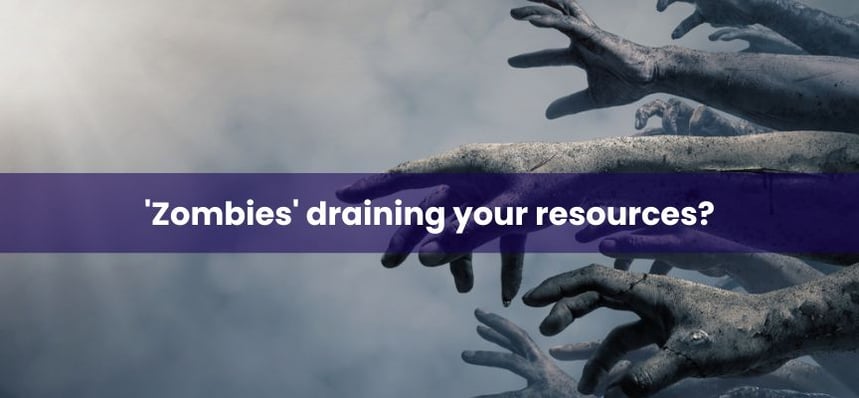You don’t need us to tell you that optimal server management is a vital aspect of running a successful tech business. Servers provide the infrastructure and resources needed to store and process data, host websites and apps, and support various business operations. However, as businesses grow and change, it is not uncommon for some servers to become what is known as ‘zombie’ equipment: a hidden source of costs that can weigh down any company.
What is a "zombie" server?
A "zombie" server, also referred to as a ‘comatose server', is an idle device that, although no longer in use, it is still connected to the internet, maintains no visibility, but nevertheless still consumes a lot of power.
While avoiding to create and maintain this type of servers seems pretty straightforward, their existence may pass unnoticed and the reasons leading to this are not that easily identifiable, especially when you're dealing with a mix of factors. For instance, said servers may be delivering some computing power or storage function, but is not used to a capacity that would make the power cost worthwhile.
Generally speaking, zombie servers appear as a result of being abandoned or not being set up for the intended usage. As soon as they were plugged in, the server operating systems frequently forbade these servers from going into sleep mode out of concern that this would render them unable to respond to queries in time.
The hidden cost of a 'zombie' server army
According to a much-cited 2015 estimation, the 10 million zombie servers out there translate into $30 billion in unproductive data center capital. This can have a significant impact on business margins, as maintaining and managing these unused servers can be quite costly, especially in today’s inflation-ridden economies.
The larger the number of zombie servers, the bigger the drain on resources for businesses, and particularly for tech businesses. They take up space, require regular maintenance just like your fully functioning servers, while eating up your energy efficiency.
Kill the zombies to keep your sustainability goals alive
Even if more recent figures are lacking, it’s safe to say that removing idle servers would lead to gigawatt-scale reductions to the world's IT load. Moreover, idle servers could be wasting around 30% of their consumed energy, draining the life out of your company’s sustainability goals. With proper oversight, the displaced power use could then support new IT loads designed to create economic value.
In addition, given that they are often not properly secured and maintained, zombie servers can pose a security risk, leaving your business vulnerable to cyber threats.
The good news is that by locating and putting in place a policy designed to deal with zombie servers, your business can gain benefits in multiple areas at once. Eliminating zombies is guaranteed to contribute to cheaper, greener, and safer operations.
A solution: automating with Kubeark
If you are currently using a DIY Devops strategy but are also looking to improve your business's margins and reduce the impact of zombie servers, it may be worth considering switching to Kubeark to automate the distribution flow of your software to end-users.
No matter what infrastructure you have, we will speed up your delivery, save you time and money, and let you focus on more important tasks.
By using Kubeark to automate your software distribution flow, you can also make your operations more efficient and reliable, which can help you improve customer satisfaction and make you more competitive. Automating the distribution process means that your software gets delivered to end users quickly and reliably, without the need for manual intervention.
If you are interested in learning more about how we can help you eliminate zombie servers and streamline your software distribution, get your private demo here. Seeing is believing!

